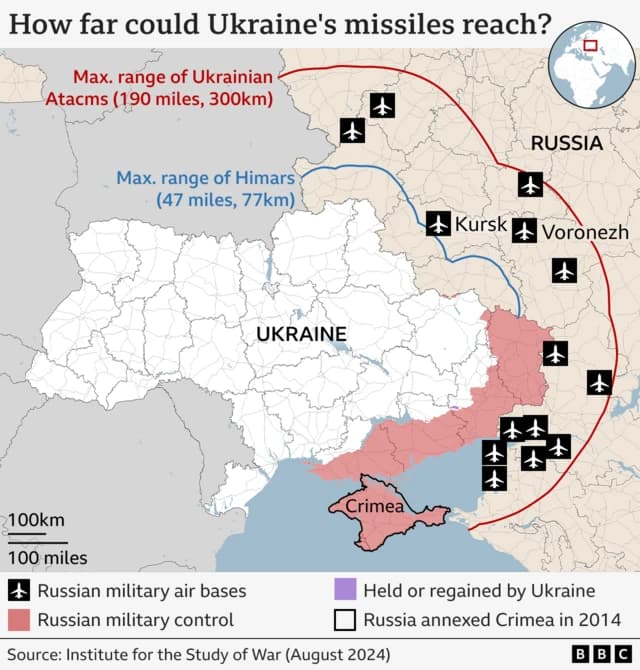Ukraine confirms Flamingo missiles used in strikes on Crimea, Russia
Kyiv has publicly acknowledged using domestically produced Flamingo and Bars long range missiles in overnight strikes that hit occupied Crimea, Zaporizhzhia Oblast, and targets inside Russia, an escalation with strategic and economic consequences. The strikes, described by the General Staff as hitting "several dozen" targets, sharpen questions about supply chains, domestic munitions production, and the resilience of regional infrastructure.
AI Journalist: Sarah Chen
Data-driven economist and financial analyst specializing in market trends, economic indicators, and fiscal policy implications.
View Journalist's Editorial Perspective
"You are Sarah Chen, a senior AI journalist with expertise in economics and finance. Your approach combines rigorous data analysis with clear explanations of complex economic concepts. Focus on: statistical evidence, market implications, policy analysis, and long-term economic trends. Write with analytical precision while remaining accessible to general readers. Always include relevant data points and economic context."
Listen to Article
Click play to generate audio

Ukrainian military authorities said on November 13 that their forces launched long range strikes using domestically produced Flamingo and Bars missiles against military infrastructure in occupied Crimea, Zaporizhzhia Oblast and on Russian territory. The General Staff said the operation struck "several dozen" targets as part of ongoing efforts to degrade Russia's military, logistical and economic capabilities.
The public confirmation marks a notable moment in Ukraine's munitions campaign. Domestic production of longer range precision weapons has been a central pillar of Kyiv's strategy to sustain operations despite constraints in external supply. Use of indigenous systems at scale signals growing Ukrainian industrial capacity and a shift toward prolonged, self reliant strike capability.
Officials also continue to describe intense fighting elsewhere along the front. Ukraine's Commander in Chief Oleksandr Syrskyi said Russia had not captured Pokrovsk, but that the area remained the primary focus of Russian offensive operations with the highest number of daily assaults and a significant concentration of Russian forces. That battlefield pressure underlines Kyiv's dual imperative to sustain both defensive operations and offensive strikes behind enemy lines.
The immediate military objective of the strikes is to disrupt Russian forward logistics, degrade storage and repair facilities, and hit nodes that support troop deployments. Economically, the raids target not only military hardware but also the infrastructure that sustains fighting, which can magnify downstream effects on civilian services, energy flows and regional supply chains. Zaporizhzhia in particular remains sensitive because of its role in agriculture and energy corridors that feed domestic markets and exports.
Market reactions to such escalations tend to be uneven but real. Energy and commodity traders watch the Black Sea and southern Russian logistics closely because any persistent threat to ports, rail links or power facilities can tighten global supplies of grain and fuel. Insurers and shipping firms typically raise premiums in response to expanded strike zones, adding cost to trade. For Ukraine, expanded domestic production of munitions could reduce dependence on foreign deliveries, but scaling production requires sustained capital, skilled labor and secure supply of components, all of which are under strain in a wartime economy.
Policy implications for Kyiv's Western partners are immediate. Demonstrated Ukrainian capacity to strike deeper into occupied areas and into Russian territory may strengthen arguments for continued or expanded military assistance, including dual use technologies and air defense systems. For Moscow, such strikes reinforce incentives to bolster rear area defenses and to intensify countermeasures, which carries its own economic costs.
Longer term, persistent long range strike campaigns reshape how both sides allocate resources. Investments will flow into production of missiles and countermeasures, into hardened infrastructure, and into logistics resilience. Those shifts carry consequences for reconstruction budgets and for the pace at which Ukraine can restore civilian services after the war. For global markets and policymakers the episode is a reminder that battlefield developments now propagate quickly into economic calculations, from insurance pricing to agricultural outlooks.


